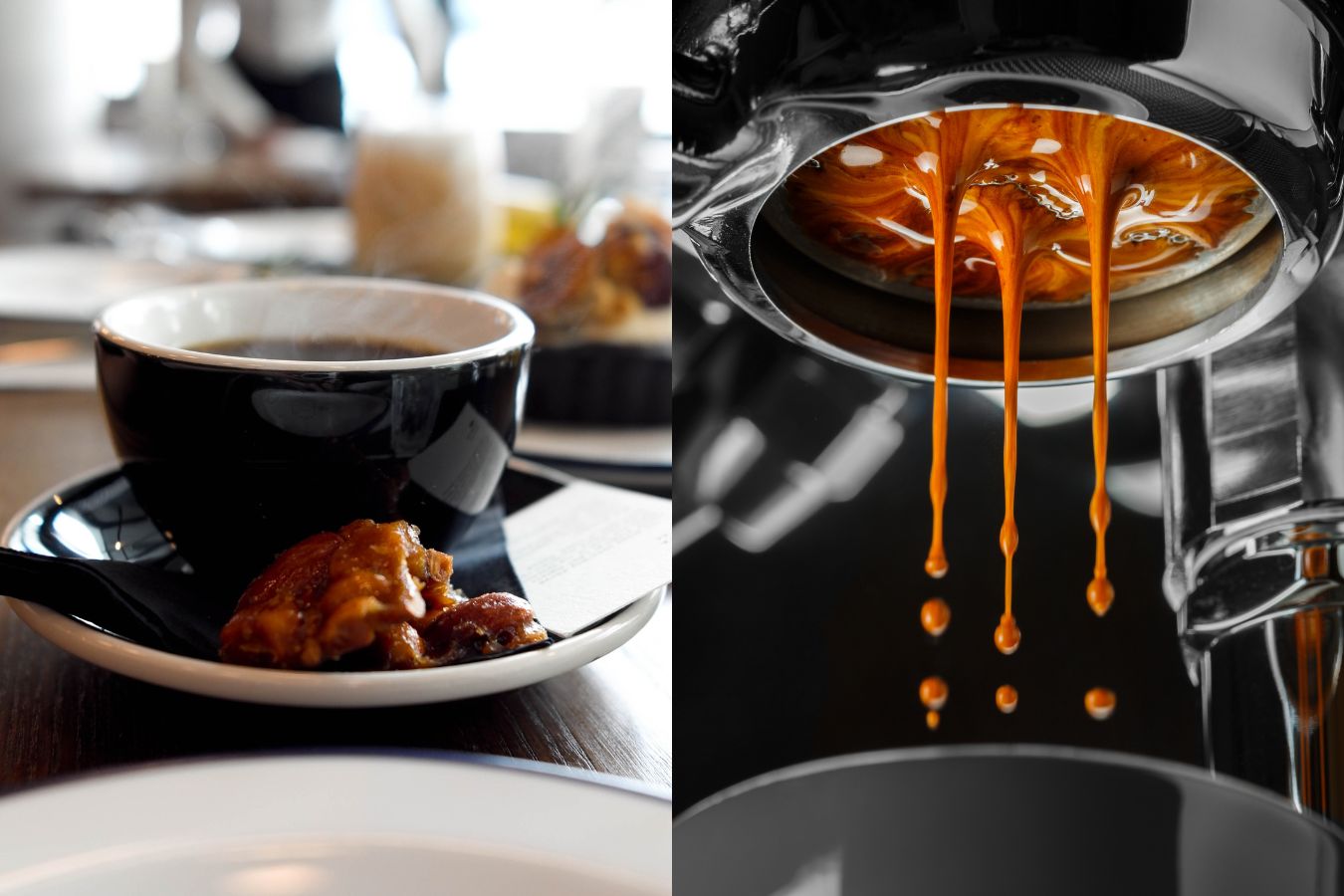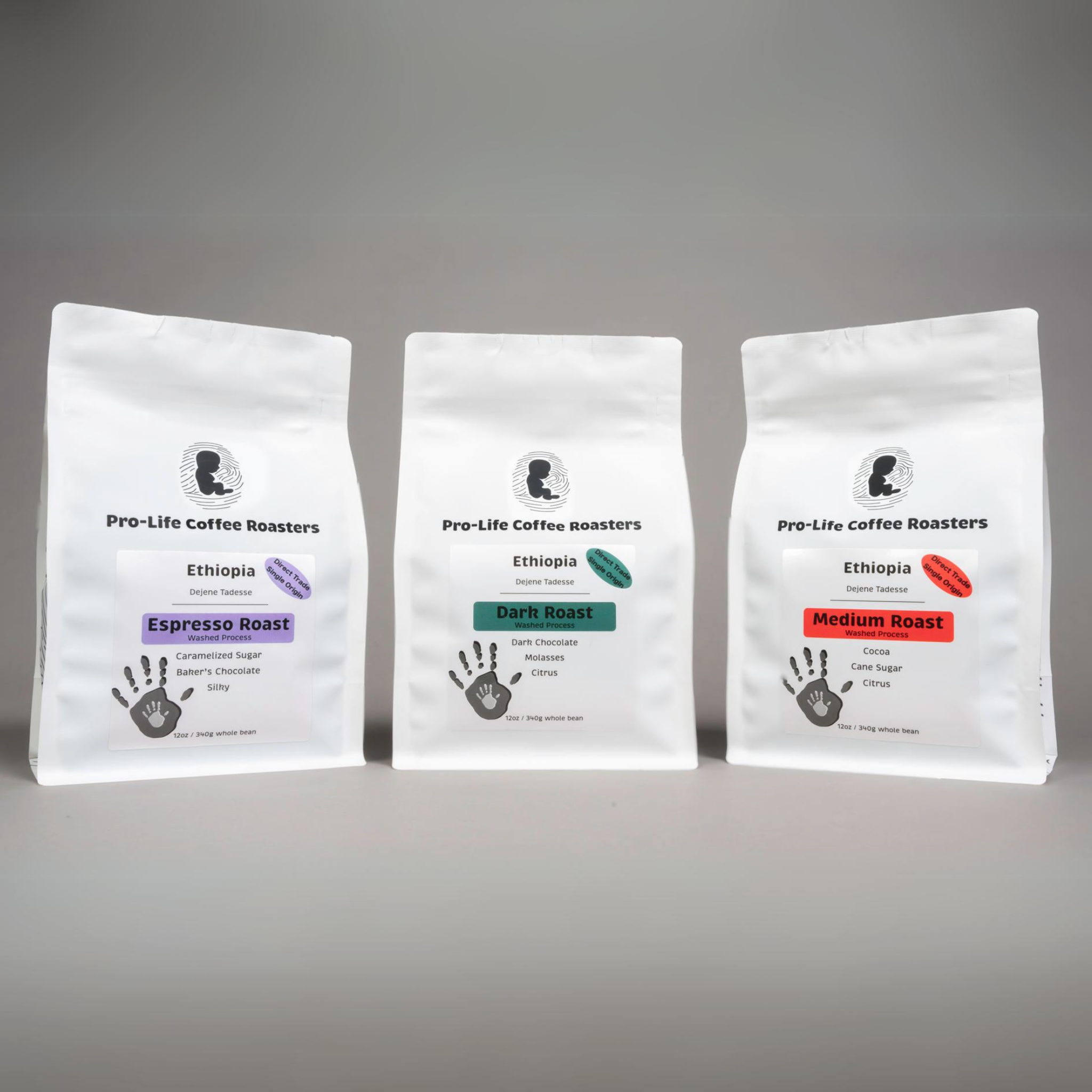Exploring the Rich Flavors of Coffee Beans: a Deep Dive Into Espresso and Blended Coffee Beans
When you check out the abundant tastes of coffee beans, you discover an intricate globe where each variety brings its own character to your cup. Understanding the beginnings, refining approaches, and toasting methods can transform your coffee experience. As you browse with the art of espresso and the creative thinking behind combined coffees, you'll start to appreciate the subtleties that make each sip one-of-a-kind. What you'll uncover next might change the means you appreciate your morning brew.
The Origins of Coffee Beans: Discovering Terroir and Flavor Profiles
When you take a sip of coffee, you're not just delighting in a beverage; you're experiencing an abundant tapestry of flavors formed by the beans' origins. Each region generates distinct taste accounts influenced by altitude, dirt, and environment. Beans from Ethiopia often break with intense, fruity notes, while those from Colombia have a tendency to offer a well balanced, nutty sweet taste.
As you discover different origins, you'll discover how terroir-- the ecological variables affecting a plant-- plays a crucial function - Single Origin Espresso. The same coffee selection can taste dramatically different depending upon where it's grown
When you consider these factors, you begin to value the complexity behind your mug. Each sip informs a tale of the land and the farmers who nurtured the beans. So, following time you delight, assume about the journey your coffee took before it reached your hands, and relish those detailed tastes that mirror its origin.
Comprehending Espresso: The Art and Science Behind the Brew
When you think of coffee, it's not almost the strong taste; it's additionally concerning the methods that bring it to life. Comprehending exactly how different preparation techniques effect taste can transform your brewing experience. Let's explore the complexities of espresso prep work and discover the unique flavor accounts that make each mug special.
Coffee Prep Work Methods
Coffee prep work is both an art and a science, combining exact techniques with a deep understanding of coffee. To begin, you'll intend to choose top notch, newly baked beans and grind them finely for ideal extraction (Single Origin Espresso). The grind dimension is important; as well crude, and your espresso will certainly be weak, as well great, and it'll be bitter
The outcome ought to be an abundant, velvety coffee with a stunning layer of crema on top. With technique, you'll understand these strategies.
Flavor Profiles Discussed
The world of espresso provides a rich tapestry of flavor profiles that can raise your coffee experience. When you take that initial sip, you'll discover an equilibrium of bitterness, level of acidity, and sweetness. Each coffee bean lugs unique notes, from floral and fruity to nutty and chocolaty. Light roasts usually showcase bright acidity and lively tastes, while dark roasts existing deeper, bolder tones.
A well-crafted blend may balance the bright notes of an Ethiopian bean with the rich, chocolatey undertones of a Brazilian bean. Embrace the trip of uncovering coffee's diverse tastes, and you'll change your coffee routine into an exciting adventure.
Processing Techniques: How They Influence Taste and Fragrance
While it might appear that the beginning of coffee beans is the most substantial variable in determining their flavor and scent, the processing approaches utilized post-harvest play an equally important duty. You'll discover that these methods can drastically alter the last preference account of your mug.
For example, the washed process eliminates the fruit from the beans prior to fermentation, commonly resulting in a cleaner, brighter taste. The all-natural process leaves the fruit intact during drying, resulting in a sweeter, fruitier profile.
Other methods, like honey handling, strike a balance, allowing some fruit mucilage to continue to be, supplying a special intricacy.
Each processing technique communicates with the beans' integral qualities, enhancing or muting details flavors and aromas. When you sip that coffee or combined coffee, remember that the journey from cherry to mug is affected not just by beginning however also by just how those beans were refined.
Toasting Methods: Opening the Full Prospective of Coffee Beans
Roasting techniques are vital for exposing the full potential of coffee beans, as they transform raw, environment-friendly beans right into the aromatic, tasty coffee you delight in. The selection of roasting approach-- light, medium, or dark-- drastically affects taste accounts.
You can explore roasting times and temperature levels to discover your excellent brew. A slower roast at lower temperature levels allows for complex tastes to develop, while a quicker roast can intensify bitterness. Take note of the fractures throughout toasting; the first crack shows a light roast, while the second crack signals a dark roast. By understanding these methods, you'll expose a world of flavor, boosting your coffee experience to new heights. Take pleasure in every sip, knowing the care that went right into your cup!
The Magic of Blended Coffee: Creating Unique Flavor Experiences
Developing a distinct flavor experience with combined coffee can transform your morning ritual right Check Out Your URL into an expedition of taste. By incorporating different beans from different regions, you can disclose a symphony of tastes that elevate your mug to new elevations. Each blend offers a distinct account, balancing body, level of acidity, and sweet taste to develop something genuinely unique.
When you choose a mix, you're not simply picking a coffee; you're choosing a trip across diverse landscapes and societies. Trying out different mixes allows you to find your individual favorites, whether you take pleasure in fruity notes or rich, chocolatey undertones.

Sampling Notes: Recognizing the Nuances in Your Mug
As you drink your coffee, you might observe a spectrum of tastes dancing on your taste, each disclosing the complexities of the beans. You may taste the intense acidity reminiscent of citrus or the deep, rich notes akin to dark chocolate. The sweet taste can evoke honey or caramel, stabilizing the overall account beautifully.
Take notice of the body of the coffee-- does it really feel ventilated and light, or is it full and velvety? The coating, also, provides hints; a sticking around aftertaste may mean nuttiness or floral touches.

Do not fail to remember to check out the distinct qualities of different origins, as each area gives distinctive tastes - Single Origin Espresso. For example, Ethiopian coffees often existing fruity notes, while Colombian beans could display a much more rounded sweetness. By identifying these subtleties, you'll strengthen your recognition for each and every mug, elevating your coffee experience to new elevations

Developing Techniques: Optimizing Flavor Removal for each Bean
When you explore the numerous brewing methods, you'll find that each technique can significantly influence the flavor account of your coffee. From French press to pour-over, each technique extracts various compounds, enhancing or silencing particular notes. For example, making use of a French press enables oils to remain in the mixture, producing pop over here a richer preference, while pour-over stresses clearness and illumination.
Temperature and grind dimension also play essential functions. A coarser work works best for chilly mixtures, while a fine grind is ideal for espresso. Trying out with water temperature-- in between 195 ° F and 205 ° F-- can disclose covert tastes, too.
Do not forget soaking time; a fast extraction can cause sour notes, while over-extraction might yield resentment. By readjusting these variables, you can maximize taste removal and really raise your coffee experience. Appreciate the journey of finding what approach best fits your taste!
Frequently Asked Concerns
What Is the Perfect Water Temperature for Brewing Coffee?
The ideal water temperature for brewing coffee's in between 195 ° F and 205 ° F. If you make use of water that's also hot, you'll over-extract flavors; as well chilly, and you will not extract enough. Goal for that wonderful place for the very best brew!
Exactly How Does Work Size Affect Coffee Flavor?
Work dimension substantially influences coffee taste. Better grinds extract much more oils and tastes, resulting in a bolder taste, while coarser grinds yield a lighter flavor. Readjusting work dimension aids you accomplish your preferred coffee account.
Exist Health Perks Linked With Alcohol Consumption Coffee?

What Is the Distinction In Between Arabica and Robusta Beans?
Arabica beans are smoother and sweeter, usually including fruity tastes, while robusta beans are more powerful with a bitter preference and greater caffeine web content. You'll observe these differences in aroma and brewing experience.
How Can I Shop Coffee Beans for Quality?
To keep coffee beans for freshness, maintain them in an impermeable container, far from light, dampness, and heat. If you only grind what you need right before developing., you'll maintain their taste longer.
Discovering the Rich Tastes of Coffee Beans: a Deep Dive Into Espresso and Blended Coffee Beans.
When you explore the abundant flavors of coffee beans, you discover a complex world where each selection brings its very own character to your mug.When you take a sip of coffee, you're not just appreciating a drink; you're experiencing an abundant tapestry of flavors formed by the beans' origins.Roasting methods are important for disclosing the full possibility of coffee beans, as they transform raw, environment-friendly beans into the fragrant, flavorful coffee you browse around these guys take pleasure in.As you sip your coffee, you may see a spectrum of tastes dancing on your taste buds, each disclosing the complexities of the beans.